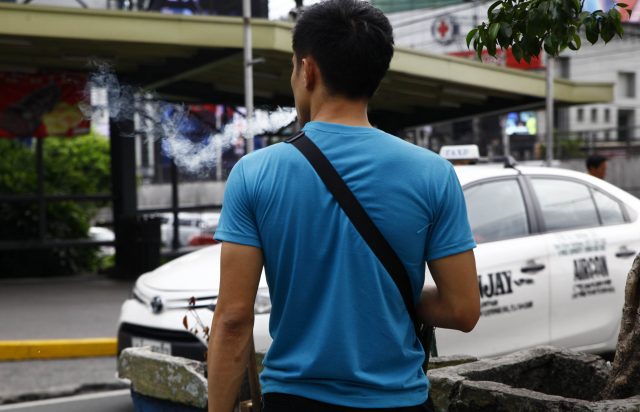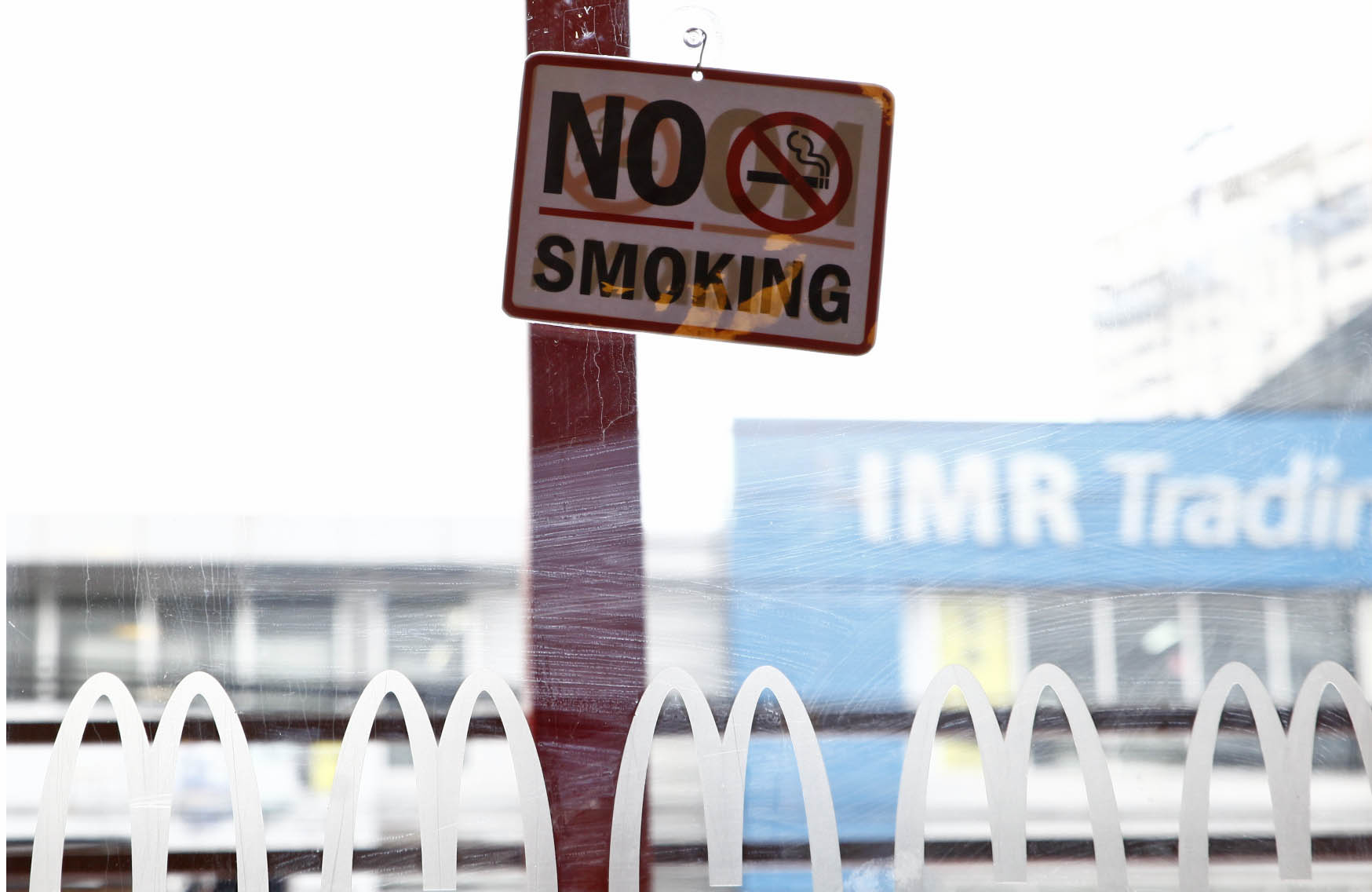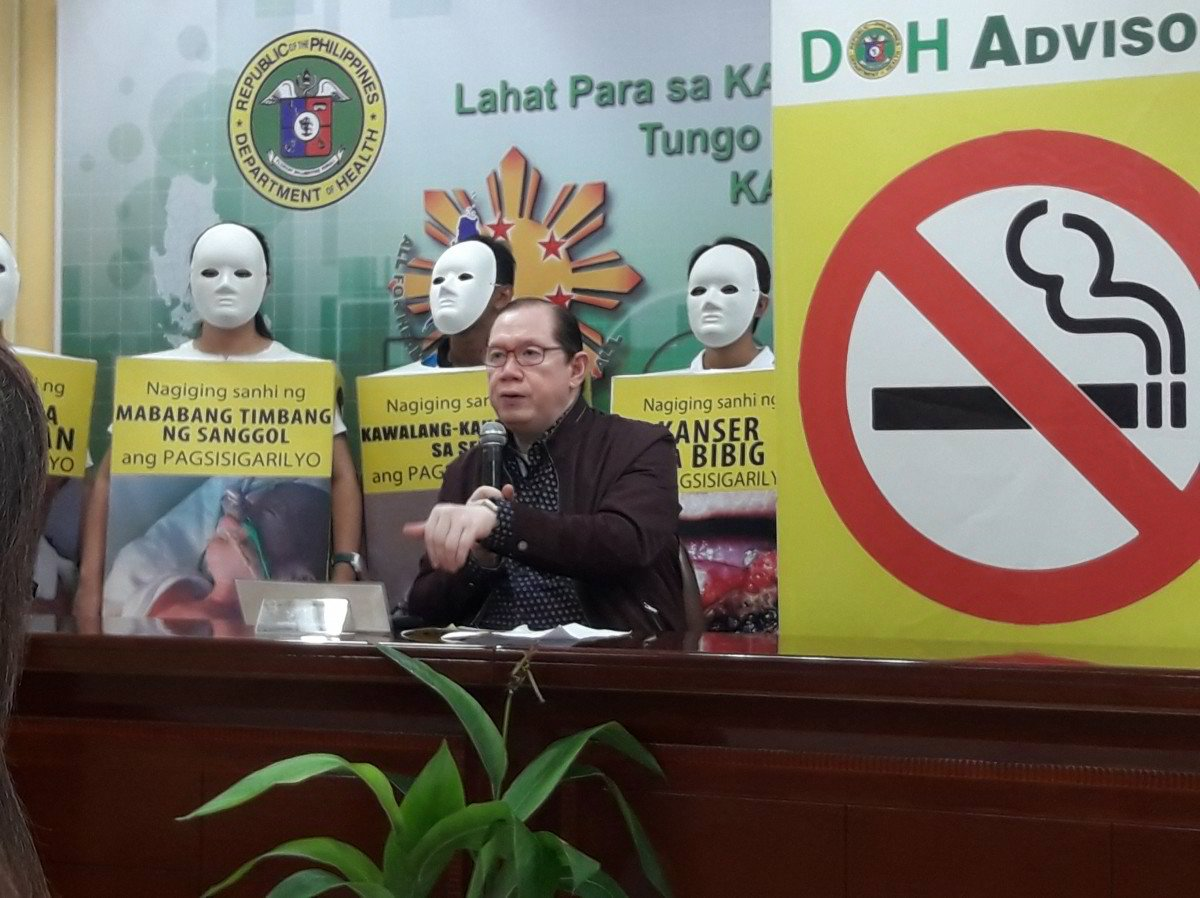
MANILA – Executive Order (EO) 26, or the ban on smoking on public places, took effect Sunday (July 23), and the Department of Health (DOH) is hoping it will indeed make it difficult for smokers to continue the habit.
According to DOH Spokesperson Dr. Eric Tayag, the EO limited the “world” of smokers as they will only be allowed to smoke inside designated smoking area (DSA) of establishments, buildings, and malls considered as “public places” under the EO.
The order signed by President Rodrigo Duterte aims to protect non-smokers at the same time from the ill effects of smoking on health.
As a rule only one DSA is allowed for every building, hotel, mall or establishment.”For example, all of the tenants in the mall shall have one common DSA. They cannot have separate DSAs,” Dr. Tayag said in an interview on Saturday.
Tayag added that having more numbers of DSAs can defeat the purpose of the EO, which was designed to limit the options of smokers in continuing the habit and thus encourage them to quit instead.
The prescribed area for a DSA should be not more than 20 percent of the floor area of the building or establishment.
Setting up the DSA is quite costly because it requires a buffer zone that separated the smokers from non-smokers. The buffer zone has an extra room the door of which automatically closes so that smoke wafting from cigarettes will not be inhaled by minors and non-smokers inside the mall/building or establishment.
The Health official added that it seemed many public places were not ready yet with their DSAs so far. “So ang nakikita namin (The way we see it now) it is almost impossible for every establishments, to conform with the smoking area restrictions (including putting-up of DSAs),” Tayag said in an interview with reporters.
Tayag admitted that one example of the difficulty of meeting the tough specifications of a DSA was the SM San Lazaro. Mall management reportedly claimed that while it has plans to provide a DSA, the store was still in the process of designing the DSA.
“While the manager informed us that they have the intention to put a DSA, as of now in the absence of DSA they will opt to temporarily put signage of “No Smoking Area” in the mall.
An InterAksyon team that went around checking enforcement on Sunday noted several restaurants putting simple “No Smoking” signs to just deter the habit and not have to put up teh DSA.
Tayag said that at this point in time, the easiest option for an establishment which cannot afford to comply – or at least not right away – is to put the “No Smoking Area” signage.

By having the signage, the management of the building, mall, hotel or establishment must however, also inform customers about the need to comply.
In the absence of DSA, a violator faces corresponding penalties from the task force of the local government units.
“Establishments, owner of buildings, malls will also face the consequences of the violations which will be imposed by the local government units,” Dr. Tayag said.
Penalties or fines may range from fees to non-renewal of license or termination to operate if on monitoring, they had allowed smoking customers for so many times within their area of operation.
The monitoring will be based on the reports of violation through the calls communicated in the DOH Hotline (02) 711-1102. The reports then will be forwarded to the Department of Interior and Local.Government (DILG).
The LGUs smoke-free task force teams will implement the corresponding sanctions for offenders in collaboration with the Philippine National Police (PNP) and volunteers from different sectors .
The sanctions can be based from Republic Act 9211, or Tobacco Regulations Act of 2003, existing local ordinances, administrative rules and regulations and the highest of which will be applicable in terms of penalties.
Absolute bans
Aside from that, Tayag clarified that the EO also strictly bans smoking in schools, universities, in areas where there are youth and children’s activities like basketball court, dormitories and playgrounds, in elevators, in stairways, in places where foods are prepared, in gasoline stations, hospitals, clinics and similar facilities.

The DOH spokesperson added that selling of cigarettes within 100 meters around the perimeters of schools and universities and in activity centers for youths are strictly not allowed. Also, in public conveyances like buses, jeepneys, taxi, tricycle, trains and the like which carry public passengers regardless if they are moving or just parked.
Smoking within the airports and seaports will not also be allowed unless they have a buffer zone.
Parking areas in malls should not also be a place for smokers and even inside the car itself parked within the premises of the mall because, as a rule they have to follow the rules of the malls.
Commercial streets with tenants not on the same building and operating separately who have customers can be allowed to put-up a common DSA through the discretion and in coordination with the LGUs leaders that have jurisdiction to them in case their business operations have “smoking customers” which they want to “please”.
Meanwhile, the Health Official also reminded that smoking in workplaces are not allowed under Tobacco Regulations Act of 2003.
The EO was signed on May 16 by President Rodrigo R. Duterte. It was published in a local newspaper of wide circulation on May 24. The EO takes effect after 60 days after publication, which is July 23.









